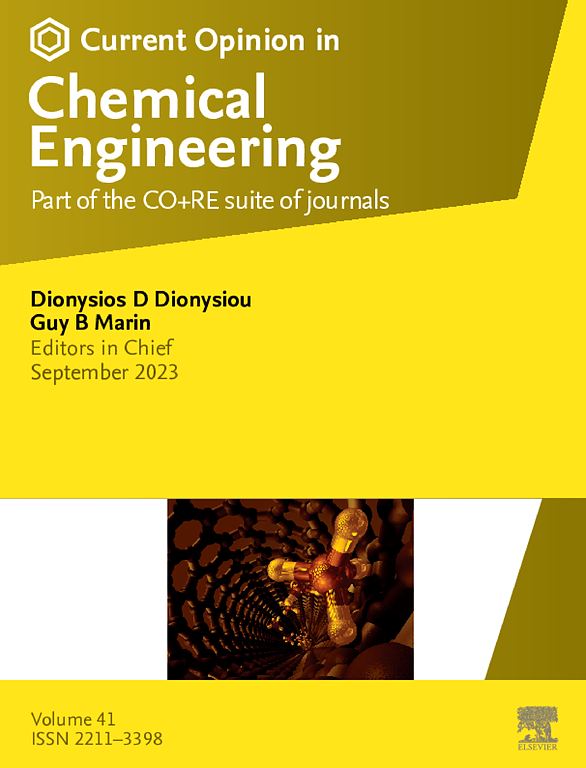解决水产养殖系统中的微(纳)塑料污染
IF 6.8
2区 工程技术
Q1 BIOTECHNOLOGY & APPLIED MICROBIOLOGY
引用次数: 0
摘要
微(纳米)塑料(MNPs)是影响水产养殖的新兴污染物,而水产养殖是全球重要的蛋白质来源。它们的存在通过食用受污染的产品对水生生态系统、养殖物种和人类健康构成重大风险。这篇小型综述强调了水产养殖中的MNP污染,重点是检测方法、缓解策略和未来解决方案。水产养殖产生的MNPs是造成污染的重要因素,需要创新的对策,如生物可降解材料、先进的实时检测技术和强化的过滤系统。未来的观点强调迫切需要标准化,具有成本效益的MNP检测方法和采用生物基材料,平衡生态效益和环境影响。基于自然的解决方案,如基于植物的过滤器和生态工程策略,为提高生态系统的恢复能力提供了有希望的途径。决策者必须建立监管框架以限制MNP污染,将微塑料纳入食品安全协议,并促进可持续做法。关于人类健康风险的长期研究对于为可行的干预措施提供信息也至关重要。解决水产养殖中的MNP污染需要全球合作和技术创新,以确保海产品安全、保护生态系统并减少该行业的环境足迹。本文章由计算机程序翻译,如有差异,请以英文原文为准。
Tackling micro(nano)plastic pollution in aquaculture systems
Micro(nano)plastics (MNPs) are emerging contaminants affecting aquaculture, a key global protein source. Their presence poses significant risks to aquatic ecosystems, farmed species, and human health through consumption of contaminated products. This mini-review highlights MNP contamination in aquaculture, focusing on detection methods, mitigation strategies, and future solutions. Aquaculture-derived MNPs are significant contributors to pollution, requiring innovative countermeasures such as biodegradable materials, advanced real-time detection technologies, and strengthened filtration systems. Future perspectives emphasize the urgent need for standardized, cost-effective MNP detection methods and the adoption of bio-based materials, balancing ecological benefits and environmental impacts. Nature-based solutions, such as plant-based filters, and eco-engineered strategies offer promising avenues to improve ecosystem resilience. Policymakers must establish regulatory frameworks to limit MNP pollution, integrate microplastics into food safety protocols, and promote sustainable practices. Long-term studies on human health risks are also critical to inform actionable interventions. Addressing MNP pollution in aquaculture requires global collaboration and technological innovation to ensure seafood safety, protect ecosystems, and reduce the industry’s environmental footprint.
求助全文
通过发布文献求助,成功后即可免费获取论文全文。
去求助
来源期刊

Current Opinion in Chemical Engineering
BIOTECHNOLOGY & APPLIED MICROBIOLOGYENGINE-ENGINEERING, CHEMICAL
CiteScore
12.80
自引率
3.00%
发文量
114
期刊介绍:
Current Opinion in Chemical Engineering is devoted to bringing forth short and focused review articles written by experts on current advances in different areas of chemical engineering. Only invited review articles will be published.
The goals of each review article in Current Opinion in Chemical Engineering are:
1. To acquaint the reader/researcher with the most important recent papers in the given topic.
2. To provide the reader with the views/opinions of the expert in each topic.
The reviews are short (about 2500 words or 5-10 printed pages with figures) and serve as an invaluable source of information for researchers, teachers, professionals and students. The reviews also aim to stimulate exchange of ideas among experts.
Themed sections:
Each review will focus on particular aspects of one of the following themed sections of chemical engineering:
1. Nanotechnology
2. Energy and environmental engineering
3. Biotechnology and bioprocess engineering
4. Biological engineering (covering tissue engineering, regenerative medicine, drug delivery)
5. Separation engineering (covering membrane technologies, adsorbents, desalination, distillation etc.)
6. Materials engineering (covering biomaterials, inorganic especially ceramic materials, nanostructured materials).
7. Process systems engineering
8. Reaction engineering and catalysis.
 求助内容:
求助内容: 应助结果提醒方式:
应助结果提醒方式:


